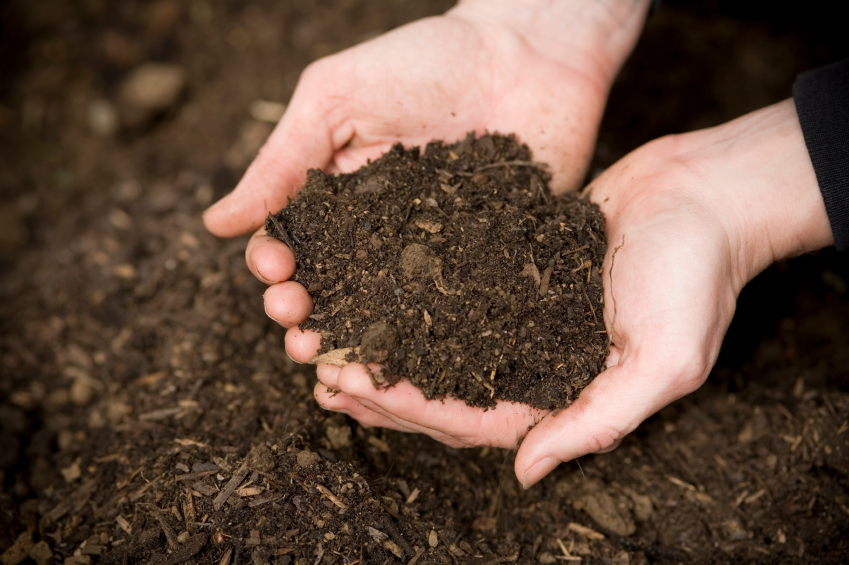
Interview with a natural builder: Charlie Rendall
In May of 2016 I was fortunate enough to visit Charlie Rendall at his home in San Marcos la Laguna, Guatemala. Charlie is the owner of “Return to the Forest,” […]


Toilets and poop are always the uncomfortable and squeamish topics that we try to keep away from pleasant conversation, but are also two of the things we should really start talking about, because both are incredibly important to the home and garden systems of anyone hoping to live more sustainably. Only in the last hundred years have flush toilets become the norm in developed countries. This system, while convenient for the user, is an incredibly energy consumptive system that requires perfectly good drinking water to be mixed with your poop and pee, and then sent, sometimes many many miles away to a sewage treatment plant to be processed, purified, and sent back to the home as clean water. That is of course, unless you live in a place that doesn’t have those facilities, in which case your sewage usually gets dumped into a river or the ocean where it contaminates the water, or you have to install a septic system on your land. The truth is that, if treated properly, poop (also known as humanure) and pee can be a great resource for building healthy soils, and you don’t have to waste any water in the process. There are many benefits to having a composting toilet in your home.
Before we get too caught up in the science and technical bits of composting, what exactly is a compost toilet and how is it different from a regular flush toilet, or a pit latrine? Composting toilets are distinctly different from flush toilets because they don’t use any water and don’t send humanure or urine off site to sewage plants, turning it into a waste product that has to be treated. They are also different from pit latrines because composting toilets carefully manage the decomposition process with additives such a cover material and moisture regulation so that humanure can be composted above ground. This eliminates the risk of ground water contamination or sewage creation. In short, composting toilets are systems for breaking down humanure and urine into benign and beneficial products via aerobic decomposition.
At this point you may be thinking to yourself that it’s all well and good that there’s another way to deal with toilet waste, but why bother making compost out of it? The fact is, when you compost your poo, you’re making use of a very nutrient rich biological resource. You can use that compost to enrich the soils in your garden, yard, or potted plants, and if you don’t have any of those things, you can still put it out in nature knowing that it isn’t a source of pollution. You’ll also stop wasting tons of perfectly good drinking water with each flush. Toilet flushing can account for around 30% on average, of water used in the home. What’s more, you’ll prevent sending your valuable toilet contents to very energy consumptive waste treatment centers only to have it sent back to you again at your expense.

So how does all of this toilet stuff go from waste material to useful compost anyway? When you compost your poop, it goes through a process in which micro-organisms consume and break down organic matter into more elemental parts. When this is done in an oxygen rich environment which facilitates the growth of these micro-organisms it’s called aerobic decomposition. Two ingredients are needed to ensure that the composting process gets rid of any potentially harmful pathogens: heat and time. A properly functioning compost pile will reach internal temperatures between 120 to almost 160F (30-70C) for large piles. Beneficial bacteria thrive in this heat while it kills harmful pathogens and helps to break down organic matter. Even if your compost pile doesn’t reach higher temperatures, allowing it to sit and decompose between one and two years all but guarantees that it will be safe to use on your garden. If you have any doubts about whether or not the compost you’ve made is safe to use, only put it on ornamental plants or edibles such as trees or shrubs where it won’t come into contact with the part you eat. An interesting thing to know when deciding how to compost is that your compost will contain a lot more minerals and nutrients if you don’t separate out the urine.
The best way of ensuring that your compost pile works correctly is by maintaining an ideal carbon to nitrogen ratio. In general you’ll see the best performance from 25-30 parts of carbon to 1 part nitrogen. Humanure averages around 8:1 carbon to nitrogen, so about 20 parts of carbon material should be added to get an ideal balance. Biological materials that contain mostly carbon such as weeds, straw, hay, leaves, rice hulls, and peat moss all work really well as cover material for a compost toilet. Saw dust can work well too if it isn’t from kiln dried or treated lumber. These are usually too dry or contain chemicals that inhibit or contaminate decomposition. Diverting liquids away from the compost can also help everything to decompose properly and help to eliminate odors. Separating urine into a different container is the easiest way to do this, otherwise you can create a permeable base in your composting container that allows liquids known as “leachate” to be diverted elsewhere. While decomposition works best in a damp environment, too much liquid will drown the beneficial microbes by cutting off their air supply and will also cause more odors. For this reason you should always make sure that your composting containers are properly ventilated so the microbes get the oxygen they need to thrive and so that smelly gases don’t accumulate or end up inside the home.
There are many models of composting toilets available to buy or build yourself. Most kinds of composting toilets fall into three basic categories.

All of these types of toilets have three main components: a toilet seat, (usually exactly the same as any conventional toilet), a storage or composting container, and an access door for extracting the container or the finished compost. Depending on the type, many composting toilets also have a ventilation unit built in to ensure that any odorous gases are diverted outside and so that there is enough oxygen in the chamber to facilitate good aerobic decomposition.
Compost toilets do require some maintenance and care to function properly and safely, but can offer rewards for your garden and your utility bill in return. To begin with, they must be emptied regularly into a compost pile if there is no long term composting chamber in the unit. The compost must be maintained properly with both a good carbon to nitrogen ratio and enough moisture for the microbes to thrive. In order to keep everything sanitary the container unit must be cleaned well after each emptying and a good carbon rich cover material should be replenished so you always have enough to cover your poop.
In conclusion, there are a whole slew of benefits to switching over to a composting toilet. It will convert your waste into wonderful, nutrient rich, soil-building compost. It will help you reduce your water consumption by eliminating the need to flush, and in turn take the whole sewage treatment, or water pollution part out of the equation. Compost toilets are simple systems and there are many completely assembled types you can buy or even build yourself. One of my personal favorites for conventional home use is called the C-Head. They are also easy to maintain, and if done correctly, they don’t smell at all. Look for the option that best suits your needs and start benefiting from your poop rather than paying to remove it.
Tagged as: compost toilets, water, Articles.

In May of 2016 I was fortunate enough to visit Charlie Rendall at his home in San Marcos la Laguna, Guatemala. Charlie is the owner of “Return to the Forest,” […]



Copyright Regenerative Skills 2021
Post comments
This post currently has no comments.